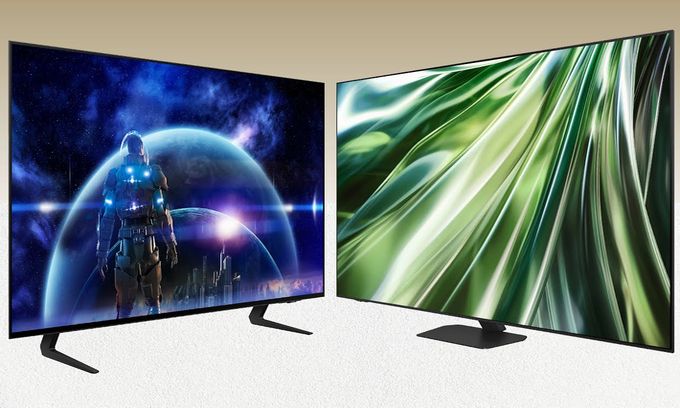Fierce competition in the consumer electronics segment encourages companies to invest heavily in the development of innovative technologies. In turn, TVs and projectors are the leaders in this trend. An incomplete list of innovations includes quantum dot technology (QD), LG’s OLED Evo panels, Hisense Dual Cell, laser TVs (ultra-short throw projectors with ALPD-based laser light engines and built-in TV receiver), Instrumental Texas’s pixel shift-based XPR (Xpanded Pixel Resolution) technology, etc.
QD-OLED panel and mini LED backlight
The Samsung Display’s hybrid QD-OLED panel, and mini LED backlight in the TCL Series 6 (2018) can rightfully be positioned as one of the most significant.
In fact, Samsung Display have successfully implemented all the advantages of LCD and OLED technologies in the QD-OLED panel. Physically, it uses an additional stack of blue OLED material to illuminate the red and green quantum dots.
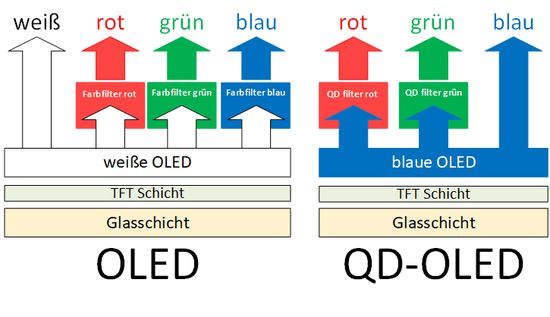
Today their model range includes:
– Sony A95K (2022) / A95L (2023);
– Samsung S95B (2022) / S95C & S90C (2023) / S95D & S90D (2024).
MiniLED backlight has radically increased image contrast of LCD TVs. It significantly improved the brightness control accuracy in different frame areas due to the use of miniature LEDs, which are grouped into hundreds and even thousands of local dimming zones with independent brightness control.
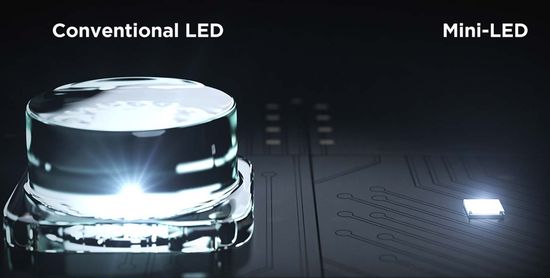
At CES 2021, TCL, Samsung and LG introduced the OD-Zero, Neo and QNED series with their own miniLED versions. In fact, this year was the starting point for premium LCD TVs with quantum dot technology and miniLED backlight (‘QLED miniLED’ TVs).
Thus, today Samsung offers two premium TV series, including Samsung Neo series (QN models with QD + mini LED technologies) and Samsung S OLED series with hybrid QD-OLED panel. Of course, their comparison is quite relevant.
At first glance, the comparison of the flagships Samsung S95D vs Samsung QN95D is the most logical. But the company’s pricing strategy has some nuances. In particular, the flagships offer relatively minor bonuses compared to the following Samsung S90D and QN90D, but they are significantly more expensive.
Samsung QN95D / S95D vs QN90D / S90D
QN90D vs QN95D (65″):
– price ~ $ 2,000 vs £ 2,600 – £ 2,900 or ~ € 2,500 for 55″ or ~ $ 4,200 / AU$ 6,340 or ~ $ 3,300 (from https://valueelectronics.com/product/samsung-2024-qn95d-miniled-tv/);
– differences – 60W vs 70W built-in speakers and ADS / IPS vs VA panel sub-type.
S95D vs S90D (65″)
Price ~ $ 2,900 vs $ 1,800.
The S95D is brighter, better tracks PQ EOTF, has better color volume, matte screen finish, and comes with Samsung’s Slim One Connect Box. The S90D has better HDR gradient handling and better pre-calibration SDR accuracy.
Specs (S95D vs S90D):
– contrast picture – inf : 1;
– blooming – no;
– dimming zones count – 8,294,400 (formally, each OLED is a dimming zone);
– input lag – 10.1ms, 5.4ms and 4.7ms for 1080p/4k@60Hz, 1080p/4k@120Hz and 1080p/4k@144Hz signals, respectively;
– color gamut – DCI-P3 – 100% and Rec.2020 (xy / uv) – 86% / 91%.
HDR / SDR brightness:
– peak 10% window ~ 1,635 vs 1,200 / 760 vs 500 nits (cd/m²);
– peak 50% window ~ 450 vs 330 / 390 vs 320 nits.
Pre / Post calibration:
– White Balance dE – 2.97 vs 2.17 (good value < 3) / 0.27 vs 0.20;
– Color dE – 1.84 vs 1.44 / 0.65 vs 0.88 (good value < 3);
– Gamma – 2.11 vs 2.12 / 2.19 vs 2.19 (2.1 – 2.3);
– Color Temperature – 7,050K vs 6,892K (good value 6500K).
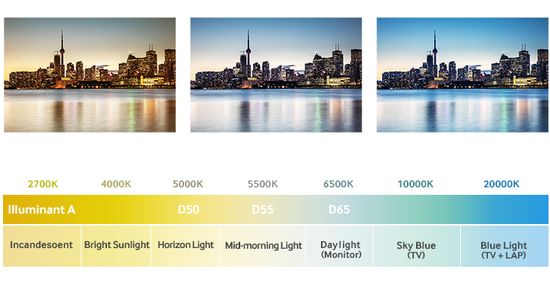
Probably, this will not stop progressives with a good budget, but the choice of most consumers depends on the price-quality ratio. As a result, the Samsung S90D and QN90D are much more popular and their comparison seems more appropriate.
QN90D vs S90D
Both models use Tizen 8.0 OS, Tuner Analog (NTSC/PAL/SECAM) DVB-T DVB-T2 DVB-C DVB-S DVB-S2, have twin tuner, HDMI ARC / eARC, layer against reflections, support Dolby Digital & Dolby Atmos, Google Assistant & Amazon Alexa, and HDR 10, HLG, HDR 10+, HDR 10+ Adaptive video technologies.
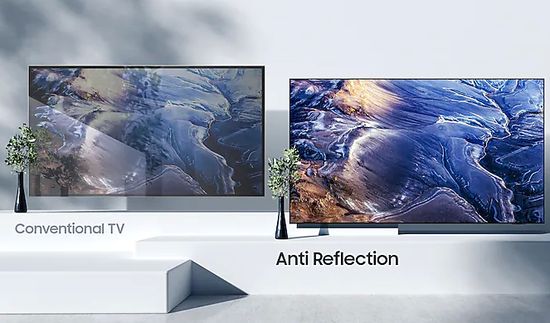
In addition, they have NQ4 AI Gen2 Processor with 20 neural networks and provide color gamut of ~ 90% vs 99% for DCI-P3 and 50% vs 55% in Rec 2020.
Differences:
– contrast – 167,100 :1 vs infinite :1;
– panel type – IPS vs QD-OLED;
– viewing angle – wide vs very wide;
– peak brightness (SDR / HDR, 10% window) ~ 2030 vs 490 nits / 2090 vs 1190 nits;
– input lag ~ 11.8ms vs 10ms for 4K@60Hz +HDR and 7ms vs 5ms for 4K@120Hz;
– audio – 60W 4.2.2ch vs 40W 2.1ch;
– gaming – 144Hz , 4x HDMI 2.1, Variable Refresh Rate (VRR HDMI Forum), AMD FreeSync, Nvidea G-Sinc;
– response time (pixel color change rate) ~ 4.0ms vs 0.2ms.
Traditionally, LCD (QN90D) is brighter, but OLED (S90D) is more contrasty and has wider viewing angles. But frankly speaking, these specs have long been redundant in premium models. In addition, the impact of these factors on image quality depends on the content (night city or sky, sunny beach, etc.) and viewing conditions (bright ambient light or dark room). However, HDR 10+ Adaptive automatically optimizes the settings in both series.
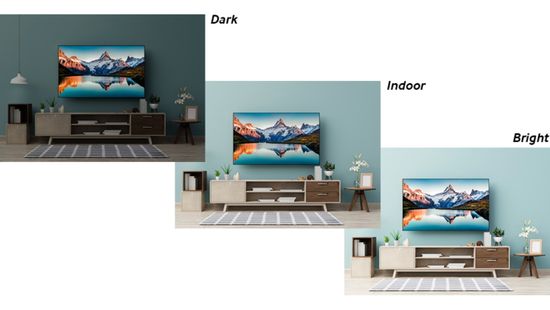
In fact, using light sensor, it analyzes the viewing conditions and integrates its results into dynamic metadata, optimizing the brightness and contrast of the scene.
But in the most common case (regular content during daytime viewing without direct sunlight), both models provide almost identical quality.
Conclusion
Overall, the company successfully solved the marketing problem by creating a slightly cheaper hybrid QD-OLED TV with similar image quality vs Neo series. Of course, the difference of $ 200 ($ 2,000 vs $ 1,800 for 65″) can hardly be positioned as very significant. However, 10% is also not bad.
In addition, with the exception of the Sony A series, they have no competitors yet. Chinese giants are actively developing LCD TVs. This year they have already introduced superb Hisense U8N and TCL QM851G with quantum dot technology and mini LED backlight. But hybrid QD-OLED TVs are not yet in their model ranges.
Finally, TVs with QD-OLED panels were introduced a little later and have slightly better prospects for further improvement.
Considering the almost identical image quality and price, the choice between QN90D and S90D depends on secondary factors including discounts, warranty, shipping terms, etc.
This video demonstrates the Samsung Display QD-OLED panel.
